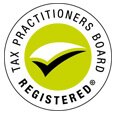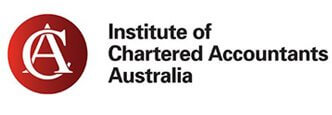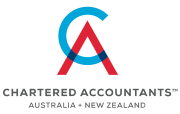
Salary Sacrifice vs Personal Deductible Contributions: And the winner is…
Super is a great way to save for retirement. It offers an opportunity to invest in long-term growth assets and enjoy generous tax concessions along the way. For those wanting to make extra contributions and reduce their personal tax bill, there are two options:
■ Salary sacrifice, and
■ Personal deductible contributions (PDCs).
Both have their benefits, and choosing the right method depends on your cash flow, flexibility needs and personal preference.
Let’s break them down.
What are salary sacrifice and personal deductible contributions?
1. Salary sacrifice
Your employer deducts a portion of your pre-tax salary and contributes it to your super fund.
2. Personal deductible contributions (PDCs)
You make voluntary contributions from after-tax money and later claim a tax deduction when you lodge your tax return.
Salary sacrifice
Benefits of salary sacrifice
■ Timing – Salary sacrifice contributions reduce your taxable income immediately, meaning your employer will withhold less tax and you will immediately enjoy the tax saving. PDCs provide a tax deduction when you lodge your tax return meaning you do not get the tax benefit until later.
■ Discipline – Salary sacrifice is automatic and helps maintain savings discipline.
■ Simplicity – Salary sacrifice can be much simpler and less administrative. PDCs require you to submit paperwork to the super fund known as a “notice of intent” form. This paperwork must be submitted within strict timeframes. With salary sacrifice you do not need to worry about such paperwork.
When salary sacrifice is a winner
Salary sacrifice is a winner for employees who:
■ Prefer a “set-and-forget” approach to growing their super.
■ Have regular income and want a simple way to contribute.
■ Want to ensure their contributions are made gradually over the year to benefit from “dollar cost averaging”. This reduces the risk of “going all in” at the peak of the market.
Personal deductible super contributions
Benefits of personal deductible super contributions
■ Availability – Salary sacrifice is only available to employees. If you are not employed, you can’t salary sacrifice. Instead, you might able to make a PDC to super.
■ Flexibility – PDCs offer greater flexibility, allowing you to contribute lump sums at any time during the financial year.
■ Reversibility – After making the contribution and submitting paperwork to claim the deduction you might change your mind.
Perhaps you have insufficient income to justify claiming a deduction and would prefer that contribution not be subject to the 15% “contributions tax”. It may be possible to “reverse” the contributions tax and not claim the deduction, but unless you have retired or met a condition of release the contribution will remain “stuck” in super.
When personal deductible contributions are a winner
PDCs are a winner for people who:
■ Want greater control over when and how much they contribute.
■ Have variable income or expect a large one-off payment (eg, bonus, inheritance, asset sale).
■ Are self-employed or receive income from multiple sources.
■ Want to contribute additional amounts closer to the end of the financial year to maximise their tax deduction.
Enjoy the best of both worlds:
Combining salary sacrifice and PDCs
Many people use both strategies to maximise their super contributions efficiently. For example:
■ Setting up salary sacrifice to contribute steadily throughout the year.
■ Making a PDC at the end of the financial year if additional concessional contribution (CC) cap space is available.
■ Adjusting contributions based on unexpected income or bonuses.
Conclusion
Salary sacrifice and PDCs each have their advantages, and the right choice depends on your employment, cash flow and personal preference.
By speaking to your adviser as to how each method works, you can make informed decisions to optimise your retirement savings while also reducing your tax bill.
Beware of Bitcoin gains!
If you own Bitcoin, or any other crypto currency, you may have been the beneficiary of Donald Trump’s election as President last November – which saw Bitcoin prices jump by almost 50% almost immediately after the election (and certainly in the following weeks).
And if you decided to take advantage of this and realise your gain by selling your Bitcoin you may have a capital gains tax (CGT) problem, and a nasty one at that (albeit, it is only a tax problem – it is not a “no-profit” problem!) .
So, if you have made a capital gain, you should consider a few things.
Firstly, the Tax Office’s data matching capabilities regarding the buying and selling of Bitcoin are very extensive (and very good) – so, any idea of just not declaring your gain would bring with it big risks.
Secondly, like anything to do with tax, keep good records of your dealings with Bitcoin: it is both a legal requirement and will help you manage your tax affairs.
Thirdly, if you also have capital losses from your dealings in Bitcoin (or any other CGT assets) in either this income year or previous ones, you can use those losses to reduce any assessable capital gains from Bitcoin – and this will result in less tax being payable.
And the same rules applies to using any current or prior-year “revenue” or trading losses you have from any other activities.
They too can be used to reduce your capital gains from Bitcoin.
Fourthly, and importantly, like most capital gains from other assets, you are entitled to use the 50% discount to reduce the amount of assessable capital gain – provided you have owned the Bitcoin for more than 12 months.
Finally, don’t forget that if you become a foreign resident for tax purposes you will be deemed to have sold your Bitcoin for its market value at the time you left the country – or the CGT rules will subject you to Australian CGT if you sell it while you are overseas. (And don’t forget about the ATO’s extensive data matching capability in this regard!)
However, all this assumes you aren’t in the business of trading in Bitcoin. If this were the case you would generally be taxed on your profits as ordinary business or other income – without the benefit of the accompanying concessions.
The other thing to be wary of is that the ATO has specific guidelines about how it treats Bitcoin and these can be difficult to apply to a particular situation.
So, if you have a “Bitcoin problem”, come and speak to us about it – and we will help you get things right (and maybe even find a legitimate way to reduce the ultimate tax payable on it).
Is an asset you own used in another person’s business?
Did you know that if you own an asset (eg, land or a factory or even a trademark) that someone else uses in carrying on a small business then you might be entitled to the CGT small business concessions when you sell the asset?
And these concessions can either entirely or partially eliminate any capital gain you make on selling it (or at least defer it).
This can occur for example when your asset is used by, say, your spouse or a child under 18 in their own business (or one that you may be involved in also) – such as where that small commercial property you own (or own jointly with your spouse) is used by your spouse in, say, that art frame, photography or accounting business etc that he or she carries on.
Typically, this concession can also apply where an asset you own is used in say the business carried on by a family company or family trust in which you have a relevant interest – although the rules can get a bit complicated where you are only a beneficiary in that family trust.
These rules can also apply in “reverse” – so that an asset owned by family company or family trust that is used in the business carried on by a relevant shareholder or a relevant beneficiary can also qualify for the CGT small business concessions (eg, farmland).
Importantly, these rules apply whether or not you lease the asset to that other person (or entity) that carries on the business.
Interestingly, the rules can also apply in appropriate circumstances where a testamentary trust continues to carry on the business that was carried on by the deceased – although in that case it may be easier to access the concessions by having the executor or beneficiary (or surviving spouse) sell the relevant business asset within two years of the deceased’s death.
These rules that allow an asset owned by one person to qualify for the CGT small business concessions where they are used by another person (or entity) in their business are only permissible where the parties are either “affiliates” or “connected entities” of each other (as defined under the tax law).
Suffice to say, whether or not persons or entities are “affiliates” or “connected entities” of each other for the purposes of the CGT small business concessions can be difficult to determine – and will depend on the exact circumstances of the relevant parties.
So, if you think you are in this situation – or propose to start a small business and intend to use assets owned by someone else in that business – speak to us first so that we can help you get the optimal CGT outcome.
FBT Checklist 2024-25
With the due date for FBT returns coming up, the following non-exhaustive checklist may prove useful in determining whether an employer has an FBT liability in the first place.
Although it will generally fall to your accountant to prepare the FBT return from your software file or other records, all of the instances where you have provided employees and/or their associates (eg, spouse) with a potential fringe benefit may not always be apparent to them. To assist you in bringing these potential benefits to the attention of your accountant, following is a general checklist to refer to.












Click to view the Glance Consultants March 2025 Newsletter via PDF






















